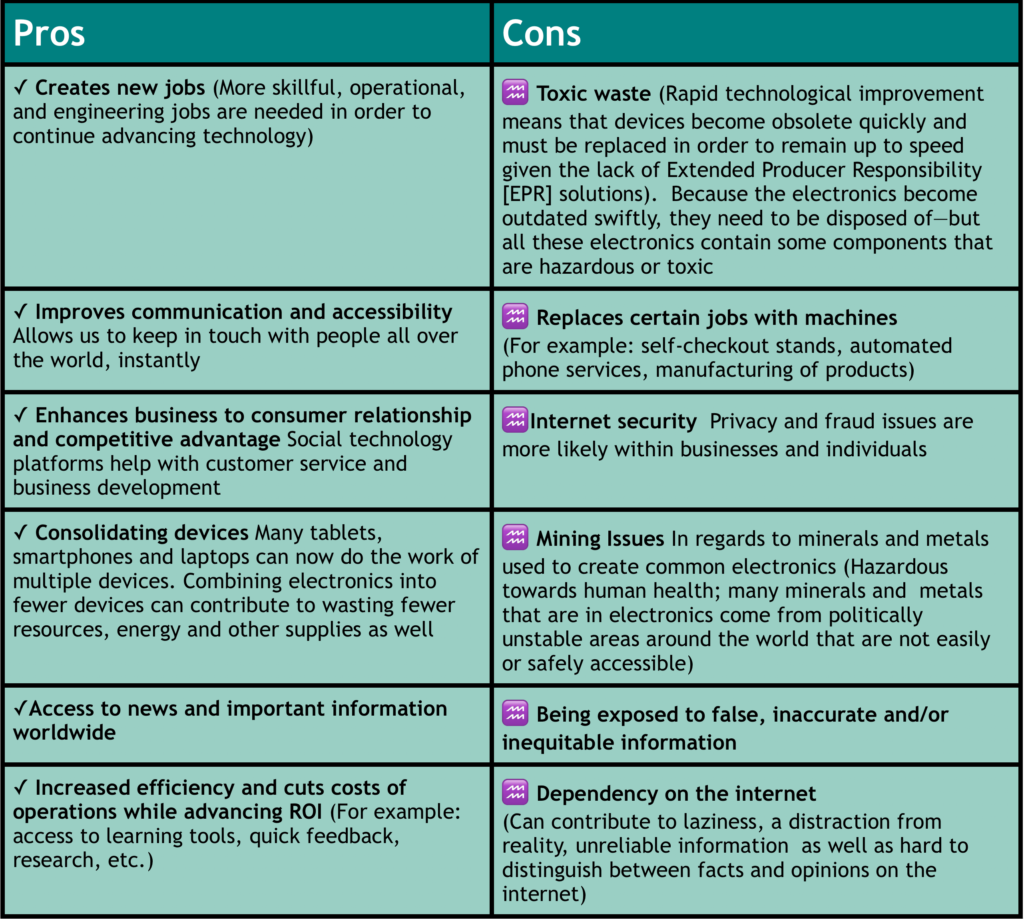Consumers and Businesses Readily Utilize the Ever-Advancing Technology and its Gadgets—But at What Cost to the Environment?
6 Pros and Cons That Electronic Technology Has On Our Environment
With computer and cell phone technology rapidly advancing, we are able to improve efficiency and global communication tremendously. These new technologies have become critical for our way of life and continue to expand our growing economy and create new jobs worldwide. However, with these technological advancements come environmental impacts that must be considered as well. Environmental Impact Assessment (EIA) is a widely used and demanded consulting field today that deals with issues like electronic waste (e-waste).
“Electronic waste (e-waste) is the fastest growing waste in North America”
Each year approximately 300 million computers and 1 billion cell phones are produced. This amount is predicted to grow indefinitely 8% every year. The New York Times reports that on average, Americans replace their cell phones every 22 months—dumping about 150 million phones solely in 2010.
An argument that can be made is the fact that new technological developments with electronics have allowed us to take away the need for multiple devices such as scanners, copiers and cameras—and be able to do all those same functions from one device—this in theory creates less waste. However, since electronics are changing so quickly, devices from just a year or two ago are often considered obsolete and need to be replaced in order to stay “up to date.” In regards to e-waste, packaging waste, and the use of hazardous materials in electronics, the obligation to eliminate or reduce these largely rests with the manufacturers and retailers.
The chart below provides an outline of just some of the advantages and disadvantages that arise either directly or indirectly from the rapid advancement of technological gadgets.

Conclusion
More often than not, gadget (computers, smartphones, tablets, gaming systems etc.) owners store their old unusable devices at home after their lives have been used up, hoping to somehow find value or use in them again. Most of these consumer devices end up in landfills—up to 91 percent in the United States— while a small percentage are recycled or reused. Whether it’s because the gadget owners are concerned about recycling a device that may have their private information on it or are unaware of where to recycle them, electronic waste dumping is becoming a large issue as technology continues to increase at a rapid level. As companies are increasingly reliant on electronics for business efficiency purposes, corporate social responsibility (CSR) assessments and annual reports, as well as stewardship initiatives—are prevailing and vastly growing environmental concerns and consulting services in demand.






